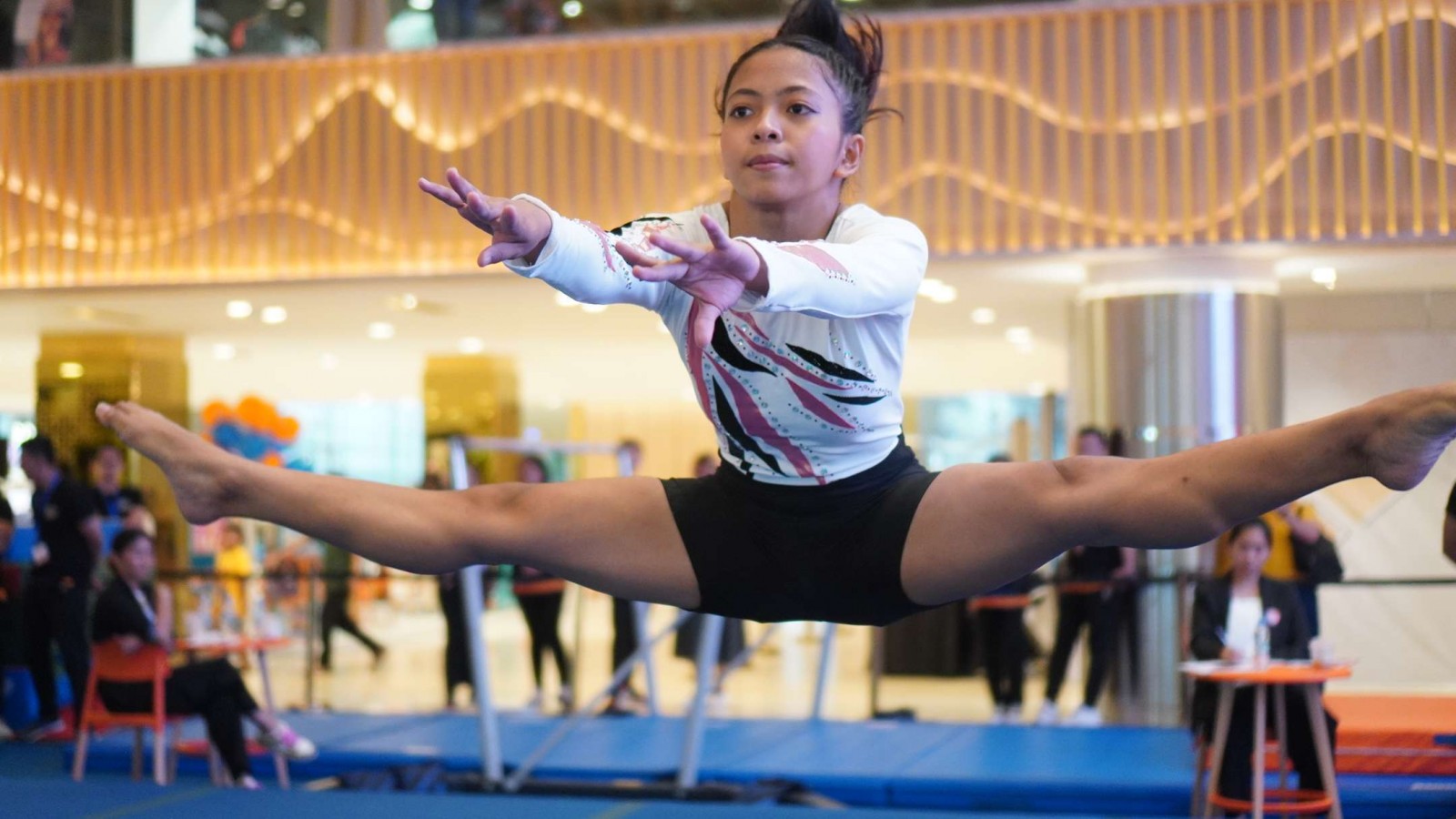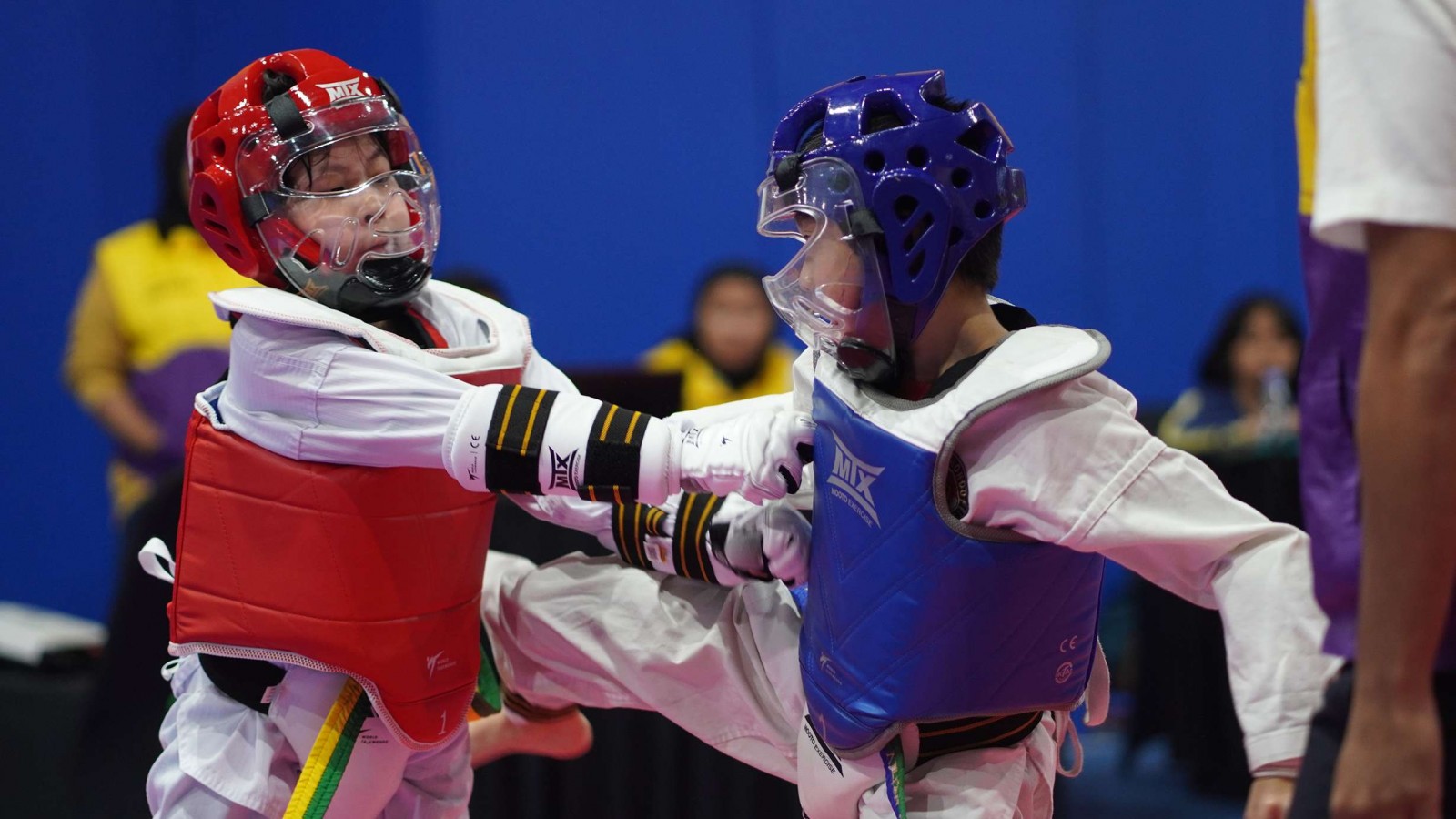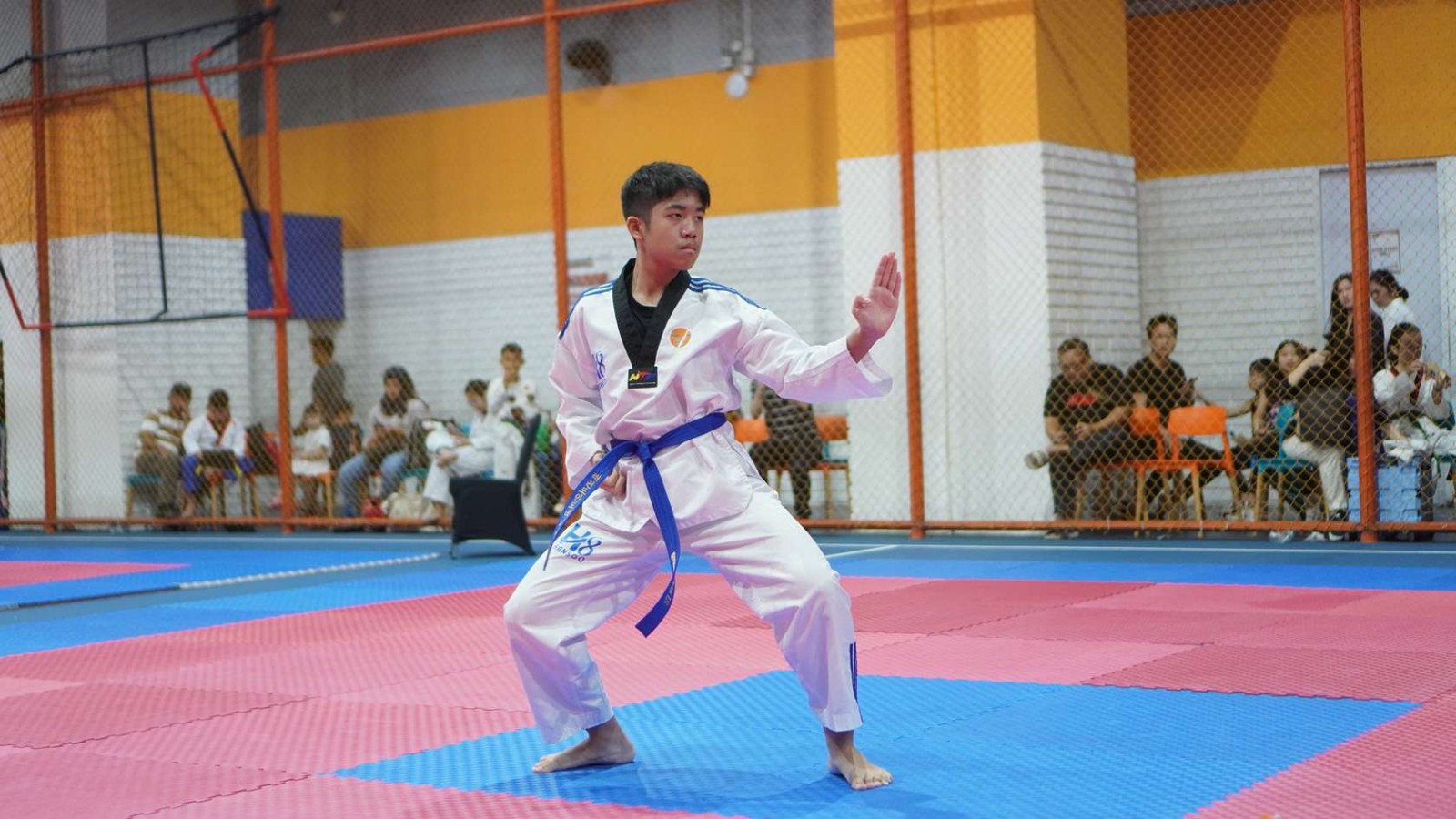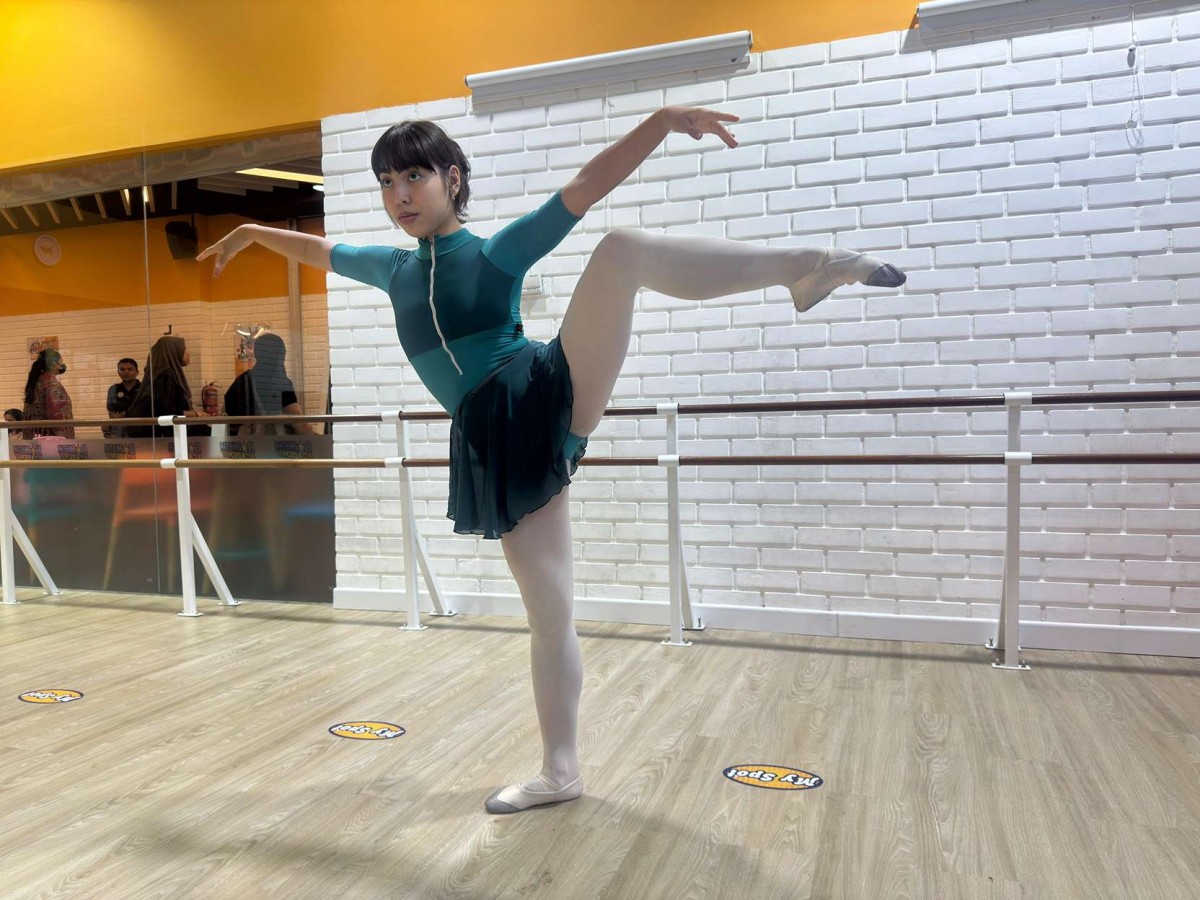What Are Jumps In Gymnastics Here's How To Execute It Well

Among its many elements, jumps play a crucial role in gymnastics, showcasing both athleticism and artistry. Whether you're a beginner or an advanced gymnast, mastering jumps is one of the essential gymnastics skills for a well-rounded routine.
In this article, we delve into the fundamentals of jumps in gymnastics, from take-off to landing, exploring various types and offering insights on execution.
Understanding Jumps in Gymnastics
Jumps in gymnastics involve propelling oneself into the air, showcasing dynamic movements, and maintaining precise control throughout. They add flair and complexity to routines across different disciplines, including artistic gymnastics, rhythmic gymnastics, and trampoline gymnastics.
Mastering the take-off and landing techniques is essential for executing jumps in gymnastics with precision and confidence. By focusing on these key elements and practicing consistently, gymnasts can enhance their performance and elevate the quality of their routines.
Taking Off and Landing Jumps in Gymnastics
Executing jumps in gymnastics requires precise take-off and landing techniques, both of which are critical for accuracy, control, and safety. Every gymnast must master these fundamental skills to achieve success in their routines.
A. Take-Off Technique
The take-off is the initial phase of a jump, where the gymnast propels themselves into the air. Proper take-off technique is essential for generating height, power, and momentum. Here are some key considerations:
- Take off on both feet
Beginners typically start by learning to take off and land on both feet simultaneously. This foundational skill helps develop coordination and balance.
- Transitioning from two feet to one
As gymnasts progress, they may advance to jumps where they take off on two feet and land on one. This requires greater control and timing to execute smoothly.
- Using a raised platform
Jumping from a raised platform, such as a bench or beam, adds complexity to the take-off and landing. It challenges gymnasts to adjust their technique to account for the change in elevation.
- Jumping between marked areas
This drill helps gymnasts practice precision and spatial awareness. Jumping between two marked areas on the ground requires accurate timing and coordination to hit the target.
B. Landing Technique
The landing is the final phase of a jump, where the gymnast returns to the ground with control and stability. Proper landing technique minimizes impact and reduces the risk of injury. Here are some tips for a successful landing:
- Maintain posture
Keep the chest up and gaze forward throughout the landing. This helps maintain balance and alignment, preventing the body from collapsing forward or backward.
- Extend arms and legs
As the gymnast prepares to land, they should straighten their arms and legs to absorb the impact evenly. This distributes the force of the landing across the entire body, reducing stress on joints.
- Land on both feet
Unless the skill specifically requires landing on one foot, gymnasts should aim to land on both feet simultaneously. This provides a stable base and minimizes the risk of imbalance or injury.
- Apparatus-specific considerations
When jumping from apparatus such as bars or beams, gymnasts must adhere to specific landing protocols to ensure safety. Coaches provide guidance on proper technique based on the equipment being used.
Executing Different Types of Jumps
Gymnastics offers a diverse array of jumps, each with its own technical requirements and aesthetic appeal. Here are some common types and the steps to execute them effectively:
1. Tuck Jump
A Tuck Jump in gymnastics is a dynamic and visually striking move where the gymnast jumps into the air and pulls their knees up towards their chest, wrapping their arms around their shins or knees. This action creates a tucked position, hence the name "Tuck Jump''.
Here’s how to execute the tuck jump:
- Commence by standing with feet positioned shoulder-width apart, knees slightly flexed.
- Maintain forward gaze and bend the knees, initiating a powerful upward thrust into the jump, simultaneously drawing the knees toward the chest.
- Envelop arms around the legs during mid-air, then release as descent begins.
- Safely land by bending the knees upon descent.
2. Star Jump
Similar to a jumping jack, a star jump involves extending both arms and legs outward to form a star shape mid-air. Generating sufficient height is crucial to complete the full motion, making it advisable to practice this jump from an elevated surface. Here’s how to do it:
- Initiate with legs together and arms resting by the sides. Flex the knees, then propel upward, extending both arms and legs outward while maintaining straight alignment.
- Return arms to sides and bring legs together to land.
- Remember to maintain straight alignment of arms, legs, and body, and point toes throughout the jump.
3. Straddle Jump
Straddle jump is an energetic gymnastics jump demanding robust body strength, flexibility, and control to achieve the requisite shape. Like other jumps, adequate height is necessary, warranting execution from an elevated surface. Here’s how to do it:
- Flex knees, then propel upward, swinging arms backward and upward to facilitate lift.
- Mid-air, extend legs into a straddle position while reaching hands toward toes.
- Reunite legs upon landing, bending knees to cushion impact, and extend arms forward for balance.
- Maintain head elevation and pointed toes throughout the jump.
4. Pike Jump
A more challenging gymnastics jump necessitating strength, flexibility, and control is pike jump. Similar to the straddle jump, it requires elevation from a platform. Here’s how to do it:
- Generate lift by bending knees and swinging arms.
- Straighten legs into a pike position mid-air, aiming to bring chin toward shins and reaching hands toward toes.
- Cushion landing by bending knees, extending arms for balance.
- Avoid looking downward during execution.
5. Straight Jump Half Turn
Straight jump half turn is beneficial jump facilitating transitions or adding intrigue to routines, contingent on strong body awareness, shaping, and control. Instructions:
- Flex knees, then propel upward, swinging arms backward and upward.
- Maintain a stretched body, with tightened core muscles, reaching arms skyward.
- Execute a mid-air twist to land facing the opposite direction.
- Maintain pointed toes throughout the technique.
6. Stag Leap
Stag leap involves propelling into the air from a run and adopting a stag shape. Two versions exist, differing in the extension of the back leg.
In the first version, the back leg extends straight behind in alignment with the floor. In the second version, the back leg extends backward with the thigh parallel to the floor, while the knee bends, and the toes point upward.
Ready to Improve Your Jumps in Gymnastics?
If your children are passionate about gymnastics and eager to improve their jumps, enrolling them in a structured gymnastics program is a fantastic step towards honing their skills.
Rockstar Academy, renowned as the best Sports & Performing Arts Academy, offers an array of physical activity programs tailored to elevate your child's abilities. Their comprehensive gymnastics curriculum includes Gymnastics Testing, designed to facilitate students' progression to higher levels and prepare them for national and international competitions.
Additionally, the Gymnastics Elite Championships foster a spirit of excellence, discipline, and sportsmanship, teaching young athletes how to handle both victories and defeats gracefully. To get started, Rockstar Academy even offers a free trial gymnastic class.
So, if you're interested in giving your child the best opportunity to excel in gymnastics, be sure to contact Rockstar Academy today!
FAQs
Are jumps difficult to learn in gymnastics?
Like any gymnastics skill, jumps require practice and proper technique. With consistent training and guidance from coaches, gymnasts can progress steadily in mastering jumps.
How can I improve my jump height?
Focus on strengthening leg muscles through exercises such as squats, lunges, and plyometrics. Additionally, work on flexibility in the hips, hamstrings, and ankles to achieve greater range of motion.
Are jumps important in gymnastics routines?
Absolutely! Jumps add variety, creativity, and difficulty to routines, enhancing their overall aesthetic appeal and scoring potential.
Can anyone learn gymnastics jumps, regardless of age or skill level?
While gymnastics jumps can be challenging, they are accessible to individuals of all ages and skill levels. Beginners can start with basic jumps and progress gradually as they develop strength, flexibility, and technique.



